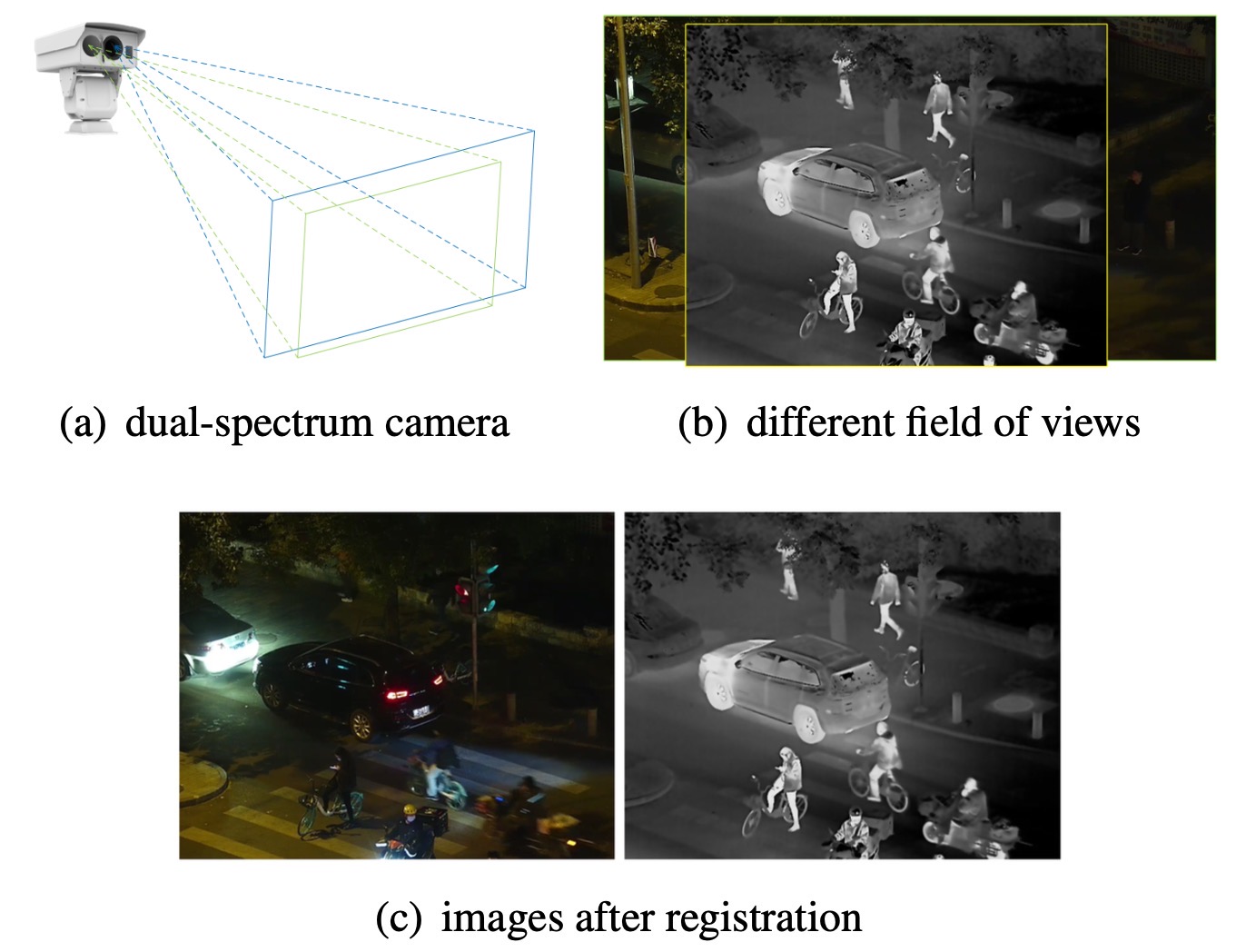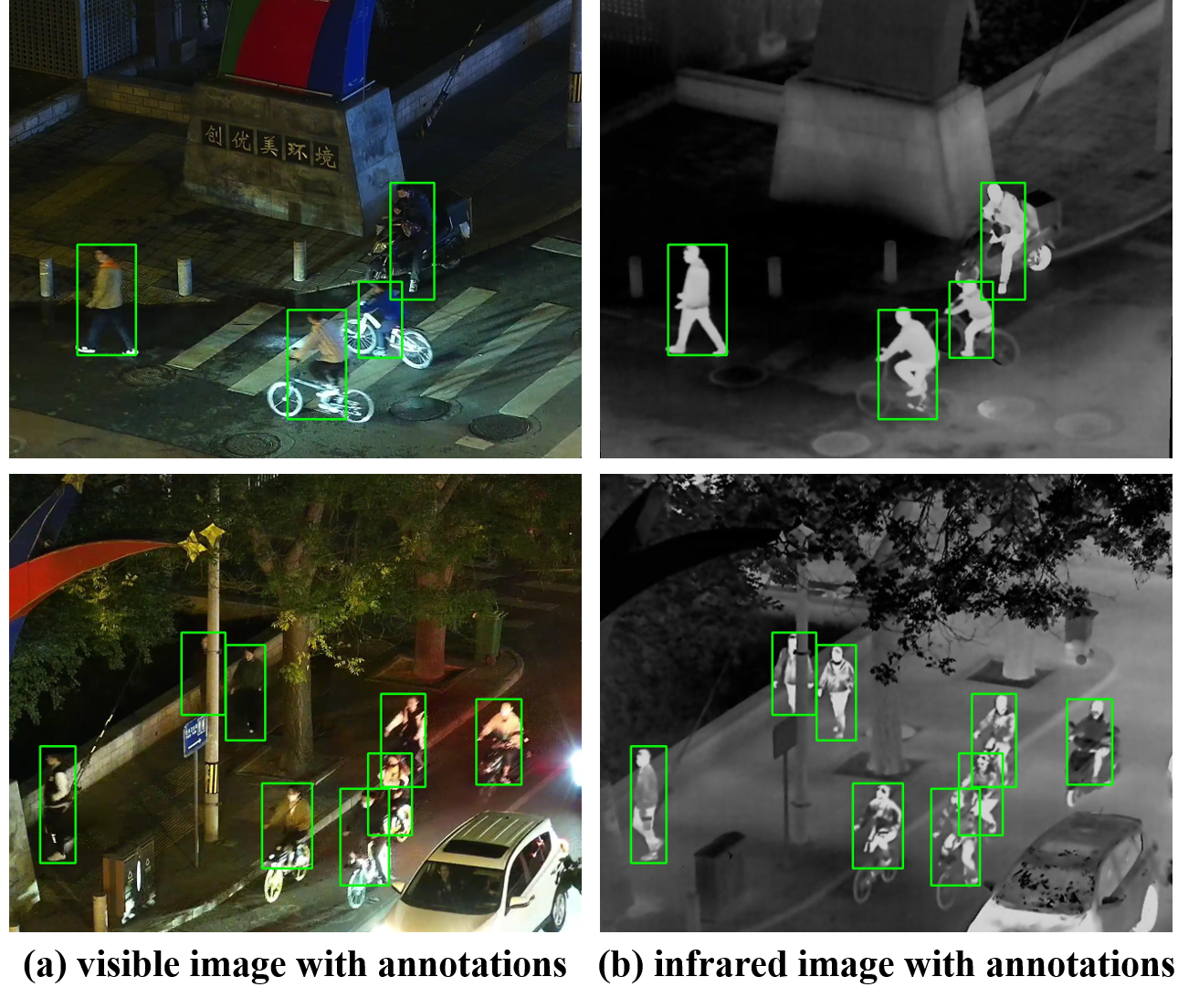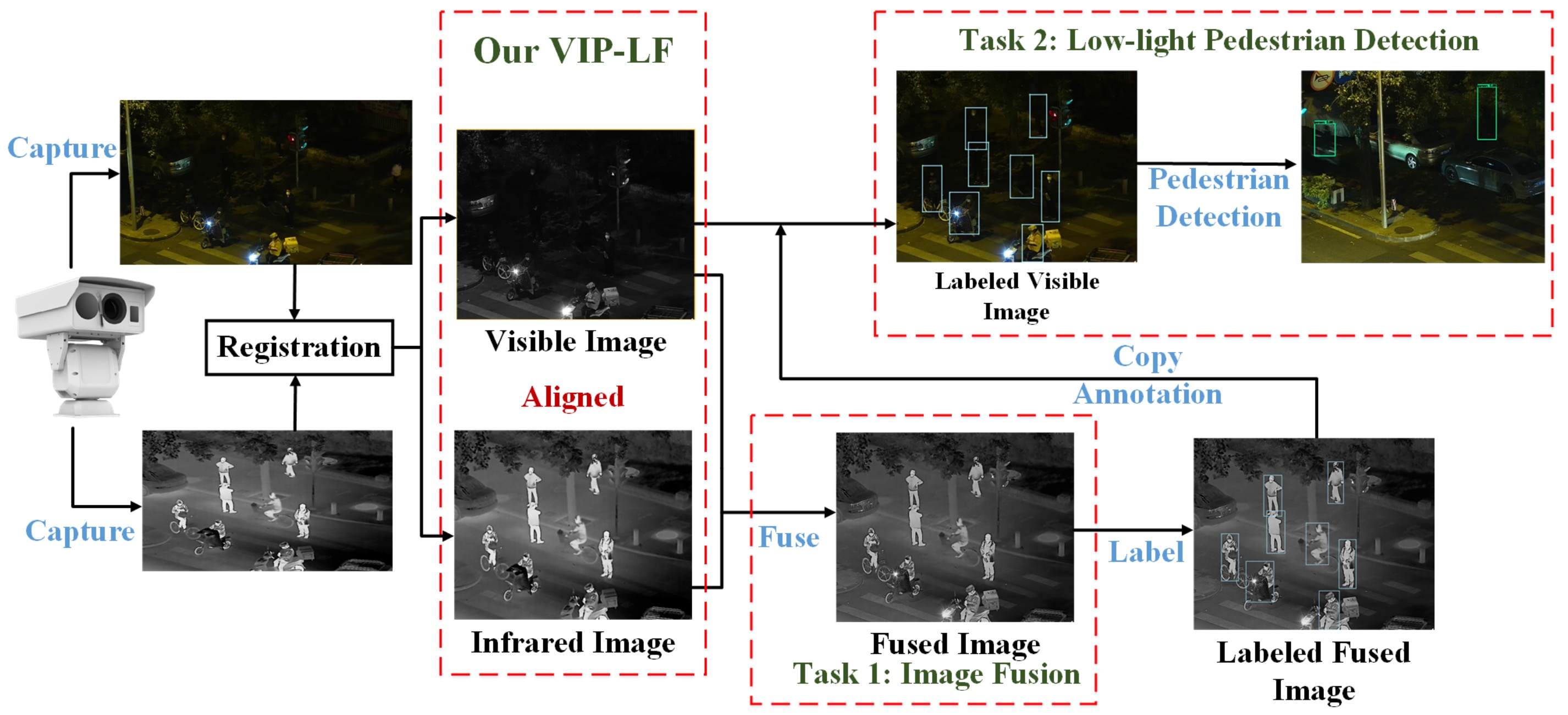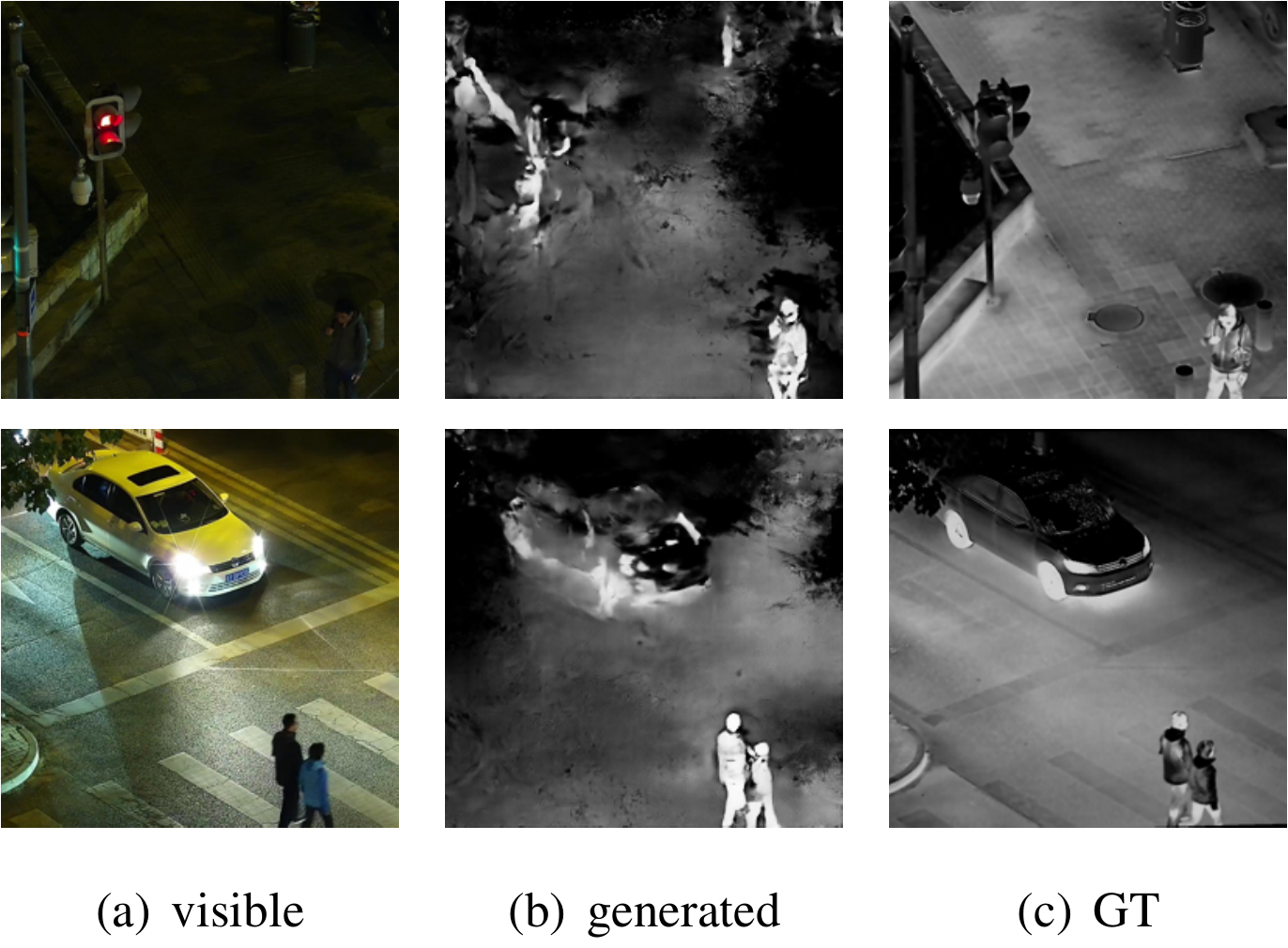Abstract
It is very challenging for various visual tasks such as image fusion, pedestrian detection and image-to-image translation in low light conditions due to the loss of effective target areas. In this case, infrared and visible images can be used together to provide both rich detail information and effective target areas. In this paper, we present LLVIP, a visible-infrared paired dataset for low-light vision. This dataset contains 30976 images, or 15488 pairs, most of which were
taken at very dark scenes, and all of the images are strictly aligned in time and space. Pedestrians in the dataset are labeled. We compare the dataset with other visible-infrared datasets and evaluate the performance of some popular visual algorithms including image fusion, pedestrian detection and image-to-image translation on the dataset. The experimental results demonstrate the complementary effect of fusion on image information, and find the deficiency of existing algorithms
of the three visual tasks in very low-light conditions. We believe the LLVIP dataset will contribute to the community of computer vision by promoting image fusion, pedestrian detection and image-to-image translation in very low-light applications. (The wavelength: 8~14um (thermal infrared images).)
This LLVIP Dataset is made freely available to academic and non-academic entities for non-commercial purposes such as academic research, teaching, scientific publications, or personal experimentation. Permission is granted to use the data given that you agree to our license terms.
Citation
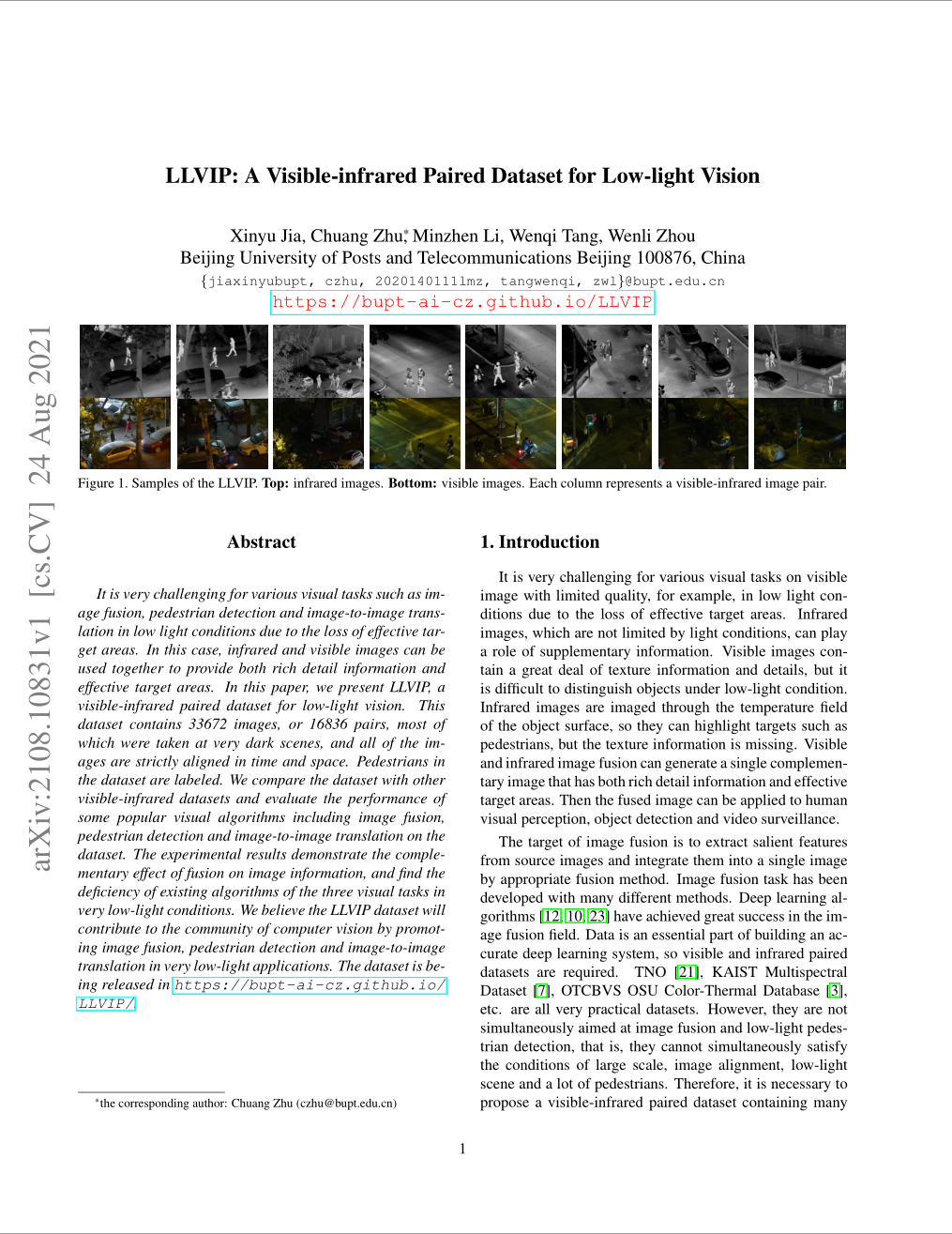
|
@inproceedings{jia2021llvip,
title={LLVIP: A visible-infrared paired dataset for low-light vision},
author={Jia, Xinyu and Zhu, Chuang and Li, Minzhen and Tang, Wenqi and Zhou, Wenli},
booktitle={Proceedings of the IEEE/CVF International Conference on Computer Vision},
pages={3496--3504},
year={2021}
}
@misc{https://doi.org/10.48550/arxiv.2108.10831,
doi = {10.48550/ARXIV.2108.10831},
url = {https://arxiv.org/abs/2108.10831},
author = {Jia, Xinyu and Zhu, Chuang and Li, Minzhen and Tang, Wenqi and Liu, Shengjie and Zhou, Wenli},
keywords = {Computer Vision and Pattern Recognition (cs.CV), Artificial Intelligence (cs.AI), FOS: Computer and information sciences, FOS: Computer and information sciences},
title = {LLVIP: A Visible-infrared Paired Dataset for Low-light Vision},
publisher = {arXiv},
year = {2021},
copyright = {arXiv.org perpetual, non-exclusive license}
}
|


